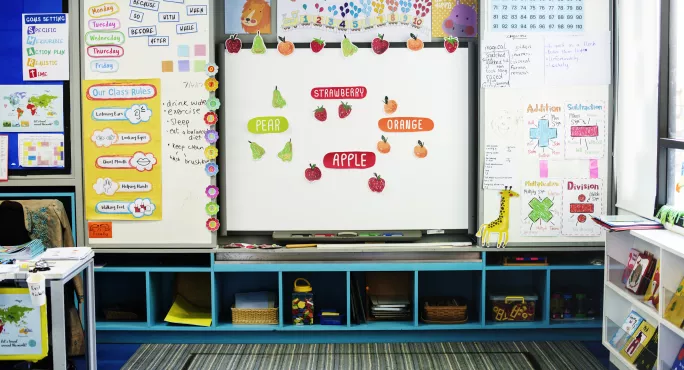Chailey Heritage School is a non-maintained, special school for children and young people aged 3 to 19 with complex physical disabilities, high health needs, sensory impairments and associated learning difficulties.
In response to these varied needs, the school has devised its own curriculum that focuses on the individual rather than standardised assessment and data.
So, what does the Chailey Heritage approach look like? There are four key elements that contribute, as headteacher Simon Yates describes below.
1. The child is the curriculum
At our school, we have created our own Chailey Heritage Individual Learner-Driven Curriculum (or “the Child Curriculum” for short), which puts the needs of the child at the core of all we do.
There are no required ‘subject areas’ like history or maths (though some of our more cognitively able pupils do take part in what we call “specific learning”).
We do recognise the need for a “broad and balanced” curriculum but embrace the idea that this will mean different things for different students. So, while several pupils might share a lesson, the learning that takes place in that lesson will be different for each one.
This approach to SEND education enables us to take a holistic view of the child, understanding what drives them and motivates them, without defining our expectations of them.
2. The ‘why imperative’
The fundamental question “why?” guides all teaching, learning and assessment at Chailey Heritage (as well as other things). Every member of staff needs to be able, at any time, not only to describe what they are doing with a child, but why.
Some special schools, including ours, use valuable but off-the-shelf packages, such as Tacpac or Sensology. Staff, usually teaching assistants, can be taught to carry out a session, quite easily. But are they taught why they are doing it?
Our school culture now has the “why imperative” firmly ingrained. For example, we even ask at the end of each governors’ meeting: why did we meet today? Did we make any difference?
For this very reason, we have completely moved away from the notion of comparative data, and the hours and hours spent compiling it.
We used to use comparative data and measurement scales (for Ofsted, not the child), then we asked, “Why are we doing this?” Did it improve the pupils’ life chances in any way? Our answer was “no”, so we stopped, and could then devote more time to creative thinking about our teaching.
3. The best input guarantees the best output
What we do measure, however, is input, by which I mean that we rigorously evaluate and assess the quality of teaching, learning and assessment at Chailey.
Through in-depth learner progress interviews, termly appraisals, formal lesson observations, ad-hoc drop-in assessments and more, we have a wealth of information about what our staff are doing for each of our young people. This offers us substantial and compelling evidence that our children’s experiences at school are the very best they can be, and if we ensure the best possible input we can, the output, whatever that might be, will also be the best it can possibly be.
4. Development, not data
We eschew any idea of “expected progress” as comparative data - it is our firm belief that you must not try to compare one child with another.
How do you know what to expect? How do you measure real-life progress, or quantify the significance of one child developing greater capacity to be around other children versus another’s confidence to go outdoors or another’s learning to drive a powered chair?
If we worry less about where children stand in relation to each other, we begin to build a story of each child as a unique individual, seeing not how they compare to others, but rather how they can develop more in themselves, in their own context, and have better lives.
So our assessment data is narrative, not numbers. Our assessment is continuous and takes an ipsative approach: that is to say there’s a description of a child at point A, a description of what we’ve done, and a description of the child at point B - and that’s it! We describe what a difference we have made to that child’s life, and also the difference to their family.
Fundamentally, we believe we must learn the child and follow the child, and we always expect to be surprised.
To find out more about the Child Curriculum, or to ask any other questions, feel free to get in touch with Simon Yates at syates@chf.org.uk

